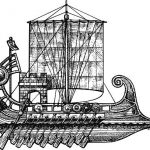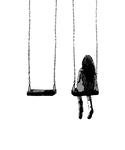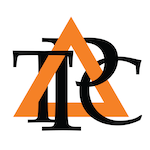 Spinning a new consulting firm out of older, bigger, ones is a common story—no different from the founding of a new religious sect in a schism with the past. A charismatic leader and a few faithful followers declare a new revelation and start preaching from a new street corner.
Spinning a new consulting firm out of older, bigger, ones is a common story—no different from the founding of a new religious sect in a schism with the past. A charismatic leader and a few faithful followers declare a new revelation and start preaching from a new street corner.
When we started Diamond we all had experience in large professional service firms. We were driven by things we didn’t like and wanted to fix and by opportunities we saw being ignored. We were less aware of the unique issues connected with being small and vulnerable.
Coming from big firms, we knew that training and knowledge management were important capabilities. As the only person who seemed marginally qualified, I was handed both problems and the hats of Chief Knowledge Officer and Chief Learning Officer. I had no staff and only the promise of a budget.
We lumped these two functions out of the reality of limited resources. In the organizations we had come from and knew, these functions were distinct. They demanded lots of resources and had grown from different origins and histories.
The decision rooted in our constraints generated insights that have become more relevant over the past twenty plus years. I want to start with the individual consultant—one of the prototypical knowledge workers that drive today’s organizations.
Alvin Toffler predicted that successful knowledge workers would be those who could “learn, unlearn, and relearn.†We live in the world he predicted. What we need to know as knowledge workers continues to grow at the same time that the half-life of our knowledge base continues to shrink.
The reality of this environment means that as a knowledge worker, you can’t count on organizations to be responsive enough to support your learning needs. They face the same problem you do and their problem is magnified by issues of scale.
Conventional strategies for learning break down. You can’t keep going back to school. You can’t afford the time and schools are as slow or slower to adapt their curricula to morphing demands as the organizations you inhabit.
Old avenues for learning in smaller, more up-to-date, chunks still exist and new avenues are appearing. If anything, the proliferation of options—YouTube, Udemy, EdX, Coursera, Khan Academy, workshops, seminars, webinars, ebooks—threatens overload more than relief.
What’s a reasonable path forward? I think it includes an explicit and dynamic personal learning plan coupled with a coherent set of supporting learning processes and practices. A learning plan should build on understanding how learning works, a view of your base of knowledge, and expectations of what skills and knowledge need developing.
Learning processes and practices provide the scaffolding and support structures that would otherwise be provided by the formal schooling environments that aren’t available. They will likely include:
- reflective practice
- cohort of co-learners
- journals/journaling practice
- reference management system
- systematic note taking and management
What you might correctly infer from this is that I am actively engaged in updating and formalizing my own plans and practices. I’m curious who else finds this a journey they might like to join?

 Tomorrow’s healthy organizations must make innovation routine. That’s a natural consequence of organizations becoming increasingly knowledge intensive while the half-life of knowledge also continues to shrink.
Tomorrow’s healthy organizations must make innovation routine. That’s a natural consequence of organizations becoming increasingly knowledge intensive while the half-life of knowledge also continues to shrink. If we’re lucky we connect with good mentors during our careers. I first worked with Mel in the late 1970s. Our paths intertwined over the years; I moved from Boston to Chicago to become one of his partners in the consulting firm we founded in 1994. He was CEO and holder of the central vision of what we became. I was Chief Knowledge Officer and Chief Learning Officer, which was a very grand title when we were 25 people; it became more representative as we grew to over a thousand in the next several years.
If we’re lucky we connect with good mentors during our careers. I first worked with Mel in the late 1970s. Our paths intertwined over the years; I moved from Boston to Chicago to become one of his partners in the consulting firm we founded in 1994. He was CEO and holder of the central vision of what we became. I was Chief Knowledge Officer and Chief Learning Officer, which was a very grand title when we were 25 people; it became more representative as we grew to over a thousand in the next several years. A number of years back my thesis advisor retired and I made the trip to Boston to join in the celebration. One of the observations that has stuck with me was that the curtain was going up on Act 3 of my advisor’s career.
A number of years back my thesis advisor retired and I made the trip to Boston to join in the celebration. One of the observations that has stuck with me was that the curtain was going up on Act 3 of my advisor’s career. This past weekend was Groundhog Day in the States—an odd custom that seeks to predict the arrival of Spring. It is also one of my favorite movies of the same name. In it Bill Murray repeats the events of the day countless times until he learns the lessons the universe has set for him. There have been times in my life when I’ve had lessons repeated until they sink in.
This past weekend was Groundhog Day in the States—an odd custom that seeks to predict the arrival of Spring. It is also one of my favorite movies of the same name. In it Bill Murray repeats the events of the day countless times until he learns the lessons the universe has set for him. There have been times in my life when I’ve had lessons repeated until they sink in. “Can we fly six of the chorus girls during the 2
“Can we fly six of the chorus girls during the 2 There’s a letter in my files dated May 31, 1974. It’s on the letterhead of the Trustees of the Princeton University Triangle Club and signed by Peter Putnam. Class of 1942, then the Graduate Secretary of the Trustees. In it Peter says.
There’s a letter in my files dated May 31, 1974. It’s on the letterhead of the Trustees of the Princeton University Triangle Club and signed by Peter Putnam. Class of 1942, then the Graduate Secretary of the Trustees. In it Peter says. Back in the earliest days of my third cycle of higher education, my advisor commented that this was the last opportunity I would have to invest in building my store of intellectual capital. I think this was his way of justifying the two books a week he was assigning in his doctoral seminar, the 50-page reading list in our organizational theory seminar, and the comparable workloads in industrial economics and research methods.
Back in the earliest days of my third cycle of higher education, my advisor commented that this was the last opportunity I would have to invest in building my store of intellectual capital. I think this was his way of justifying the two books a week he was assigning in his doctoral seminar, the 50-page reading list in our organizational theory seminar, and the comparable workloads in industrial economics and research methods.